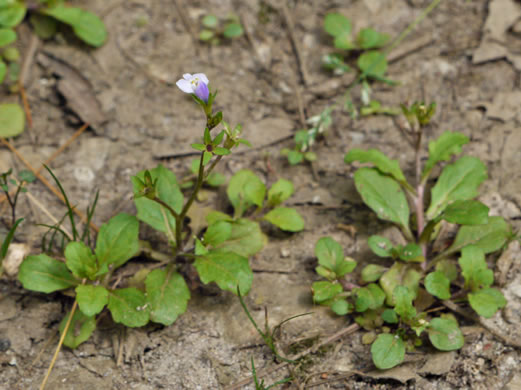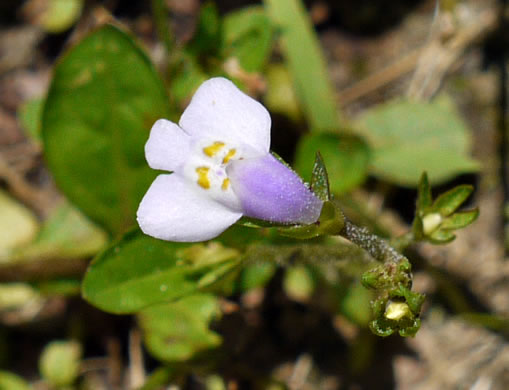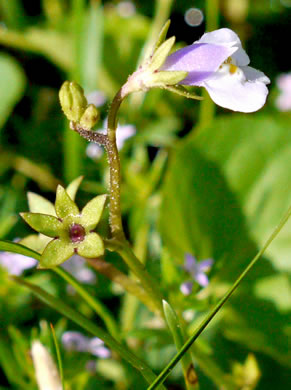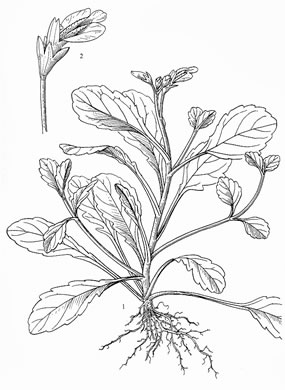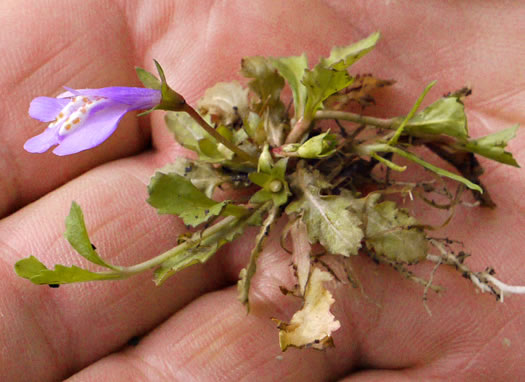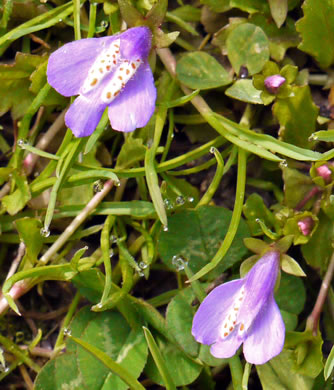Hovering over an image will enlarge it and point out features (works better on desktop than on mobile).
![]() A camera indicates there are pictures.
A camera indicates there are pictures.
![]() A speaker indicates that a botanical name is pronounced.
A speaker indicates that a botanical name is pronounced.
![]() A plus sign after a Latin name indicates that the species is further divided into varieties or subspecies.
A plus sign after a Latin name indicates that the species is further divided into varieties or subspecies.
Most habitat and range descriptions were obtained from Weakley's Flora.
Your search found 2 taxa in the family Mazaceae, Mazus family, as understood by Weakley's Flora.

![]() Common Name:
Japanese Mazus
Common Name:
Japanese Mazus
Weakley's Flora: (4/24/22) Mazus pumilus FAMILY: Mazaceae
SYNONYMOUS WITH PLANTS National Database: Mazus pumilus FAMILY: Scrophulariaceae
SYNONYMOUS WITH Vascular Flora of the Carolinas (Radford, Ahles, & Bell, 1968): Mazus japonicus 166-08-001 FAMILY: Scrophulariaceae
Habitat: Lawns, sandy, rocky, or muddy shores and bars along lakes and rivers
Uncommon (rare in Mountains)
Non-native: east Asia

![]() Common Name:
Creeping Mazus, Miquel's Mazus
Common Name:
Creeping Mazus, Miquel's Mazus
Weakley's Flora: (4/24/22) Mazus miquelii FAMILY: Mazaceae
SYNONYMOUS WITH PLANTS National Database: Mazus miquelii FAMILY: Scrophulariaceae
SYNONYMOUS WITH (MISSPELLED) Vascular Flora of the Carolinas (Radford, Ahles, & Bell, 1968): Mazus miguelii 166-08-002 FAMILY: Scrophulariaceae
Habitat: Lawns, other moist and disturbed habitats
Rare
Non-native: east Asia
Your search found 2 taxa. You are on page PAGE 1 out of 1 pages.


